One of the most exciting foodie news items in recent months was the redevelopment by the Mitsui Food and Beverage Enterprise Group (三井餐飲事業集團) of the Taipei Fish Market (台北魚市) located on Taipei’s Minzu East Road, close to the intersection with Jianguo North Road.
Back in February, this reviewer visited the sushi bar of the Addiction Aquatic Development (上引水產), which has won high praise for the quality of its food (see Taipei Times on Feb. 23, 2012).
The establishment now also offers a separate indoor crustacean restaurant, hot pot restaurant and an outdoor grill restaurant. The lure of grilled seafood, a jug of beer and an outdoor dining environment was a good excuse to check out the grill restaurant, which makes excellent use of a wide plaza at the center of the fish market complex.
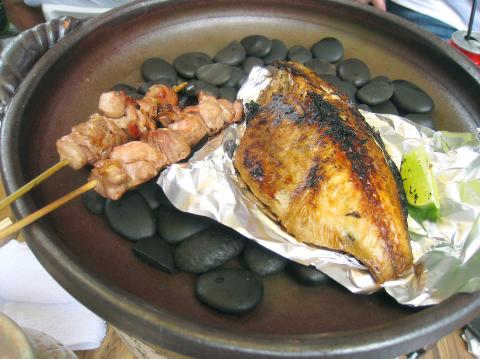
Photo: Ian Bartholomew, Taipei Times
The thing that needs to be appreciated from the get-go is that patrons do not grill their own food. The delightful hibachi device that is placed at each table is merely to keep food warm, and provide the effect of a grill, but with none of the smoke and mess that actual cooking would entail. This could prove a letdown for those eager to get their hands dirty cooking things for themselves, but on the upside, one is reasonably certain that the fish, shellfish and other foods are all properly prepared by professionals. And you don’t come away from the table smelling of cooked meat and charcoal.
The setup of the grill restaurant does provide diners with something of a fish market experience, as you are taken along a display case of seafood, some creatures alive in tanks, others presented on beds of ice, your server taking your order as you go along. You can look at the food in its raw state, then pick what you decide looks most enticing. Further along the display are skewers of corn and mushrooms, and meats such as chicken and lamb, and prepared foods, such as mushrooms stuffed with shrimp, which are served deep-fried.
Once your order is placed, you can sit back and wait for a bevy of chefs in a semi-open grill house to prepare your food. Depending on what you order, prices can vary through a very wide range. Many of the seafood items are sold by weight at market prices, changing from day to day, as does the selection available.
The prices for some of the larger shellfish are quite high. King crab (帝王蟹) claws, a hot favorite the day I visited, cost NT$580 each. Small lobsters were NT$720 a portion, and some of the superior fish were between NT$600 and NT$900. Fortunately for those on a budget, there are quite a lot of cheaper fish to choose from. Half pieces of grilled Japanese armorhead (壺鯛一夜干燒) at NT$300 and NT$200 for a whole salt grilled ayu (子持香魚鹽燒) served as the main body of my meal. The grilling had been well judged and the flesh for both was sweet, the outsides crisp and nicely charred. A small portion of grilled squid (NT$80) and scallops in the shell (NT$170 each) also proved delicious. The freshness of the produce shone through.
Unfortunately, the same could not be said of the chicken skewers (NT$50 each), which were disappointing. The meat did not taste fresh, and in any case the flavor was overwhelmingly of sweet Japanese-style barbeque sauce. Everything about it seemed wrong for an establishment touting its credentials as a market for the very freshest ingredients.
An unexpected highlight of the meal was the deep-fried burdock root (炸牛蒡片, NT$60 a portion), an excellent accompaniment to the strongly flavored fish. A wide range of beverages is on offer, but for the hot weather, a 500ml mug of chilled Asahi beer for just NT$100 seemed wonderfully inviting.
As with the sushi bar at Addiction Aquatic Development, the grill restaurant is a mix of many outstanding qualities with a few significant flaws that could fatally undermine the dining experience. The grill chefs certainly know their business and the food is brought to the table promptly, but the service style and the display of the produce is all just a little too haphazard, and the echoes of an NT$299 all-you-can-eat establishment do not sit well with the high prices and aspirations to modern urban chic.
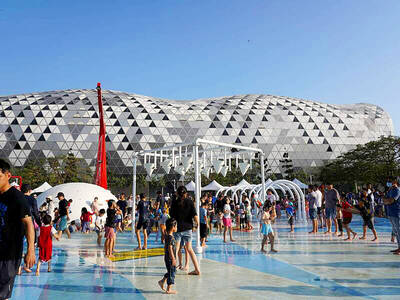
The Taipei Times last week reported that the rising share of seniors in the population is reshaping the nation’s housing markets. According to data from the Ministry of the Interior, about 850,000 residences were occupied by elderly people in the first quarter, including 655,000 that housed only one resident. H&B Realty chief researcher Jessica Hsu (徐佳馨), quoted in the article, said that there is rising demand for elderly-friendly housing, including units with elevators, barrier-free layouts and proximity to healthcare services. Hsu and others cited in the article highlighted the changing family residential dynamics, as children no longer live with parents,
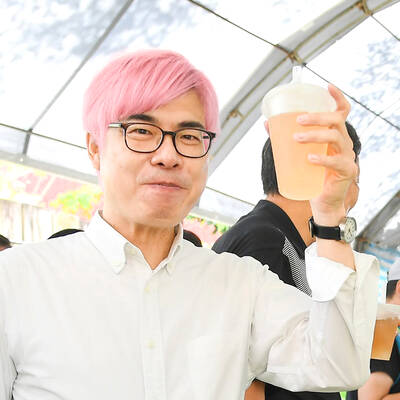
It is jarring how differently Taiwan’s politics is portrayed in the international press compared to the local Chinese-language press. Viewed from abroad, Taiwan is seen as a geopolitical hotspot, or “The Most Dangerous Place on Earth,” as the Economist once blazoned across their cover. Meanwhile, tasked with facing down those existential threats, Taiwan’s leaders are dying their hair pink. These include former president Tsai Ing-wen (蔡英文), Vice President Hsiao Bi-khim (蕭美琴) and Kaohsiung Mayor Chen Chi-mai (陳其邁), among others. They are demonstrating what big fans they are of South Korean K-pop sensations Blackpink ahead of their concerts this weekend in Kaohsiung.
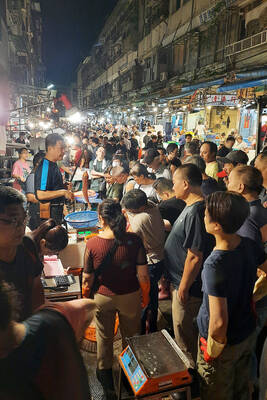
Taiwan is one of the world’s greatest per-capita consumers of seafood. Whereas the average human is thought to eat around 20kg of seafood per year, each Taiwanese gets through 27kg to 35kg of ocean delicacies annually, depending on which source you find most credible. Given the ubiquity of dishes like oyster omelet (蚵仔煎) and milkfish soup (虱目魚湯), the higher estimate may well be correct. By global standards, let alone local consumption patterns, I’m not much of a seafood fan. It’s not just a matter of taste, although that’s part of it. What I’ve read about the environmental impact of the
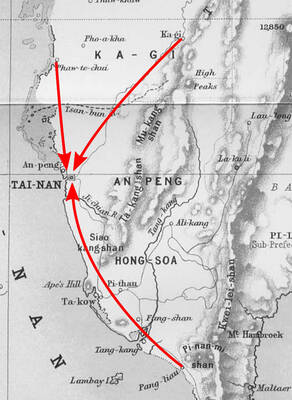
Oct 20 to Oct 26 After a day of fighting, the Japanese Army’s Second Division was resting when a curious delegation of two Scotsmen and 19 Taiwanese approached their camp. It was Oct. 20, 1895, and the troops had reached Taiye Village (太爺庄) in today’s Hunei District (湖內), Kaohsiung, just 10km away from their final target of Tainan. Led by Presbyterian missionaries Thomas Barclay and Duncan Ferguson, the group informed the Japanese that resistance leader Liu Yung-fu (劉永福) had fled to China the previous night, leaving his Black Flag Army fighters behind and the city in chaos. On behalf of the